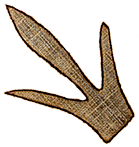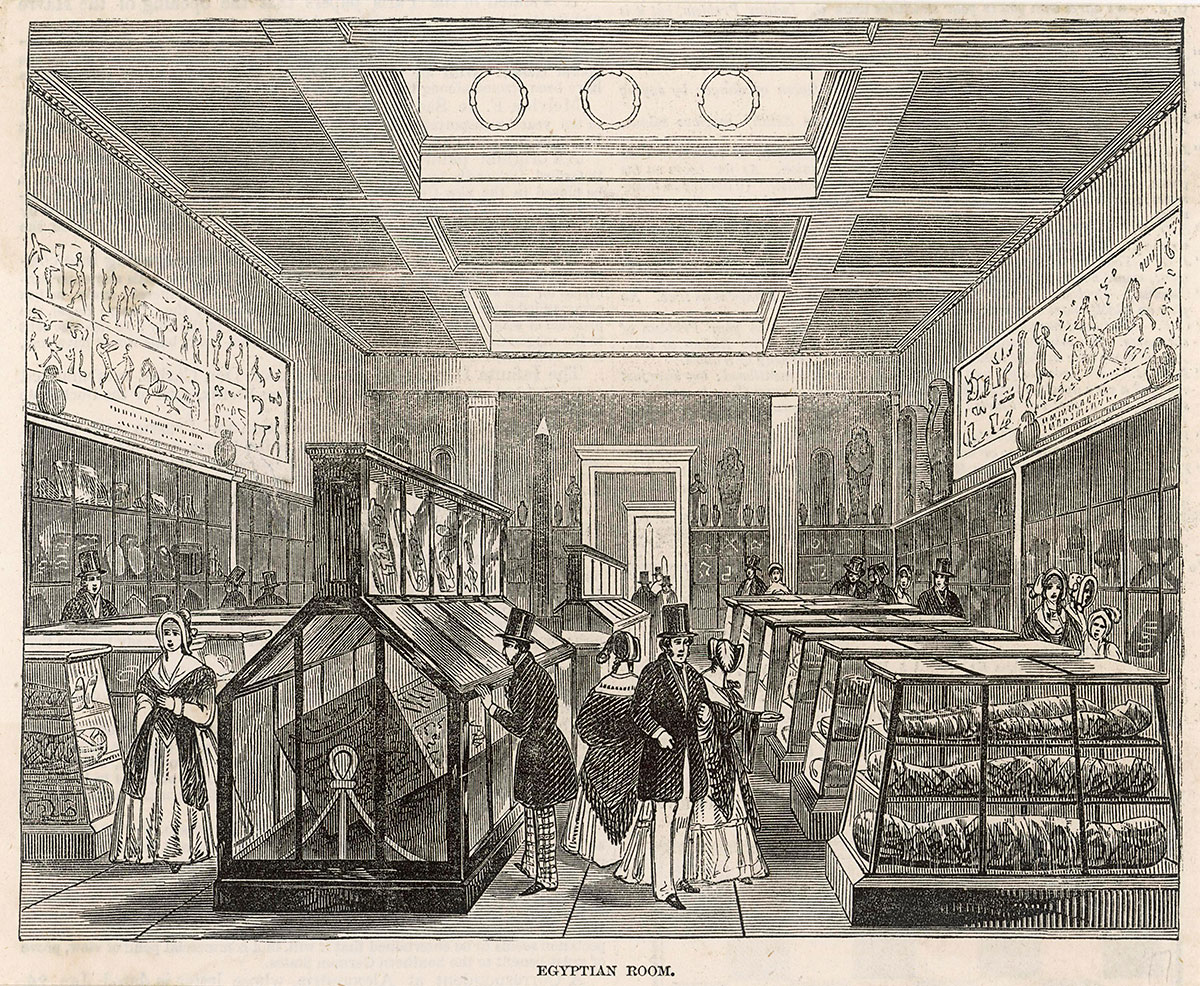 MENU
MENU
 MENU
MENU

A view of the British Museum as it looked around the time that Edward and Orra visited. "Mummies and sacophagi attract visitors to the Egyptian Room." Image courtesy of Chronicle / Alamy Stock Photo.
On June 11, they left for London, stopping at the seaside town of Brighton for a night, where Orra was in awe of their sumptuous hotel. Heading to London the next day, as they traveled for miles over a chalk formation, Edward calculated the lengths of the tunnels they passed through by counting the seconds it took to emerge: 82 seconds for one and 70 for another translated into about 2 and 1.5 miles, respectively. He was glad enough to see strata exposed by cuts made for the railroad, but by this time he felt he had seen “nearly every kind of rock in England save the crystalline.”
Finally in the grand city, Edward attended meetings of the Royal Society, the Royal Astronomical Society, and the Geological Society of London in their rooms at Somerset House, on The Strand. He recorded disappointingly little of his first professional meetings in England, except to note the names of a few people he met. One was Prof. Daubeny, the first Englishman to directly observe the fossil bird tracks on a visit to Amherst in 1837, making him one of the first geologists to support Hitchcock’s claims as to their origins by birds. Sir Charles Lyell paid Edward considerate attention and gave him tickets and introductions he thought useful to the American geologist.
Having established Woods Cabinet back in Amherst just a few years earlier, Edward took great interest in how museum collections were arranged and lit. He thought the geological display at the British Museum something of a hodgepodge, even if the specimens were good. The alabaster carvings from Nineveh must have impressed him greatly, for he imported similar pieces for the Octagon several years later. He thought little of a private collection he was invited to view at Smithfield Common, where he and Orra had gone primarily to honor religious martyrs. He was highly impressed, however, by the displays at the Museum of Economic Geology and the Geological Society of London, where small specimens were kept in drawers and large ones near windows, where the light was best. At the Hunterian Museum, Edward for the first time met face-to-face with professors Richard Owen and Adam Sedgwick, who personally gave him and Orra a tour.
The Hitchcocks were mixing with high society quite beyond their experience, yet they seemed to handle it smoothly. They took a bus to Gideon Mantell’s home for a delightful tea with their host and “two ladies, genuine Londoners,” the refreshments “elegantly served on rich china . . . a basket of some little things, one was macaroon & other, little fanciful things.” Edward said that Mantell "treated us very kindly & showed us the feet of Dinornis robustus & a multitude of other bones & also several other things with a good microscope." Social meetings with the Lyells were also pleasant, and their home was not as formal as Orra expected. Perhaps she was making a mental comparison, remembering the Lyell's visit to Amherst in 1842.
During their three-week stay in London, Edward and Orra found time to see the usual tourist sites. As usual, Edward claimed to be an invalid, yet kept a schedule that would defy the energies of many men his age, or even younger. He was deeply gratified to meet with one of the Englishmen he most admired, John Pye Smith (sadly "deaf & feeble" now), who had written a preface for his Elements of Geology in 1841.
Listen to what Orra wrote in her travel diary